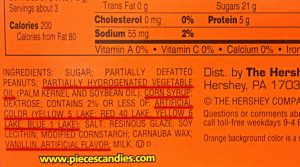
Groceries and Household Products
In this article we include a wide range of household groceries including food and household goods .
Are they all safe ?
Groceries and Household Products
We all naturally assume that products in our supermarkets and grocery stores must be safe and most advertising has been created to persuade us that these products are safe and healthy for us and our children.
Safe Products
There definitely are many safe and healthy products in our grocery stores but there are also numerous products that are toxic and have dangerous chemicals in them. Our aim is to alert you to the dangerous groceries, detergents and cleaning products that typically have these toxic ingredients in them and to help you identify them.
Unfortunately we cant cover everything in this article but suggest you read this article and then do your own research to get more information that pertains to your needs.

Foods
There are three major toxic killers you should be aware of which we also covered in the article on "Processed Foods".
The three food killers are;
- Nitrosamines (Sodium Nitrite)
- Monosodium Glutamate (MSG)
- Aspartame
You definitely identify products that have these toxins and try bto avoid them.
Household Detergents and Cleaning Products
There are hundreds of products in this category found in our grocery stores that have dangerous chemicals in them, of which many are carcinogens. We can only cover the worst here so that you can start identifying the products that create the nastiest exposure and take There are basically 7 categories and each have a few “nasties” in them .
The "Nasties"
- Air Freshners usually contain two dangerous chemicals – phenols, a caustic, poisonous chemical responsible for skin outbreaks, convulsions and coma’s, and formaldehyde, a carcinogen responsible for a number of allergic reactions, immune dysfunction, depression and headaches
- All-purpose Cleaners - There are generally a few “nasties” you should be looking out for in these products
- Chlorine Bleach and Ammonia, which cause respiratory problems
- The Sudsing Agents, DEA and TEA that can react with nitrites forming nitrosamines, carcinogens that readily penetrate the skin
- Butyl Cellosolve ( Ethylene Glycol Monobutyl) – a nerve damaging chemical that is easily absorbable through the skin
- Anti-bacterial Cleaners– these products mostly contain triclosan a type of dioxin responsible for birth defects, decreased fertility and hormone disruption. These products are not much more effective than normal soap
- Basin, Bath and Toilet Cleaners – these mostly contain corrosive cleaners that severely irritate skin, eyes and the respiratory system and are known to damage kidneys and livers like sodium hydroxide, sodium hypochlorite (bleach), and hydrochloric acid. You should also look out for the known carcinogens that damage the nervous system and cause birth defects, methanol, benzene, toluene and xylene.
- Drain Cleaners- one of the most dangerous cleaners containing corrosive chemicals, sodium hydroxide and sodium hypochlorite, that can permanently damage eyes and skin and depending how much is ingested, can be fatal. Suggest you rather use professional drain cleaners
- Dishwasher Detergents – liquid dishwashers often contain petroleum based detergents and powder detergents often contain phosphates. Look out for concentrated chlorine that is poisonous and a skin and eye irritant. These detergents also contaminate our rivers and streams killing fish and water birds.
- Oven Cleaners – among the most dangerous household chemicals, usually containing lye and sodium hydroxide which attack the eyes, skin and the lungs. Look out for benzene, methanol, toluene and xylene which are known carcinogens that cause birth defects and damage the nervous system.
- Furniture and Carpet Cleaners – often contain nerve damaging petroleum distillates which are flammable and formaldehyde, a suspected carcinogen.
Labels - look out for "signal words"
Unfortunately the specific ingredients of these products are not usually included on the label, however there should be “signal words” to guide you. These generally include “poison”, “danger”, “warning”, and “caution”. They may also include instructions that will give you an indication of the toxicity like “use gloves”, “use in a ventilated area”.
Your Assessment
Label "Signal Words"
The most important thing is to learn to read the "lables" on the products.
Manufacturers have all sorts of ways to disguise toxic ingredients by all sorts of "Signal Words" like "fragrance", parfum "caution", "warning, hydrogenated oil, corn syrup, etc. You need to learn to read between the lines and interpret these "signal words".
Food
On the food side you need to assess your exposure to the three major “toxic killers” and try to avoid the, especially Aspartame in children's drinks.
Household Products
On the “household detergents” you need to look through your cupboards and see how many of these products, with the “nasty” chemicals, you are using and to dercide if you are happy to continue using them now that you understand the consequences.
Take care and be positive and grateful for everything in your life.
With love and caring.

Next Lifestyle Choice - Water or Back to "Lifestyle Choices"
